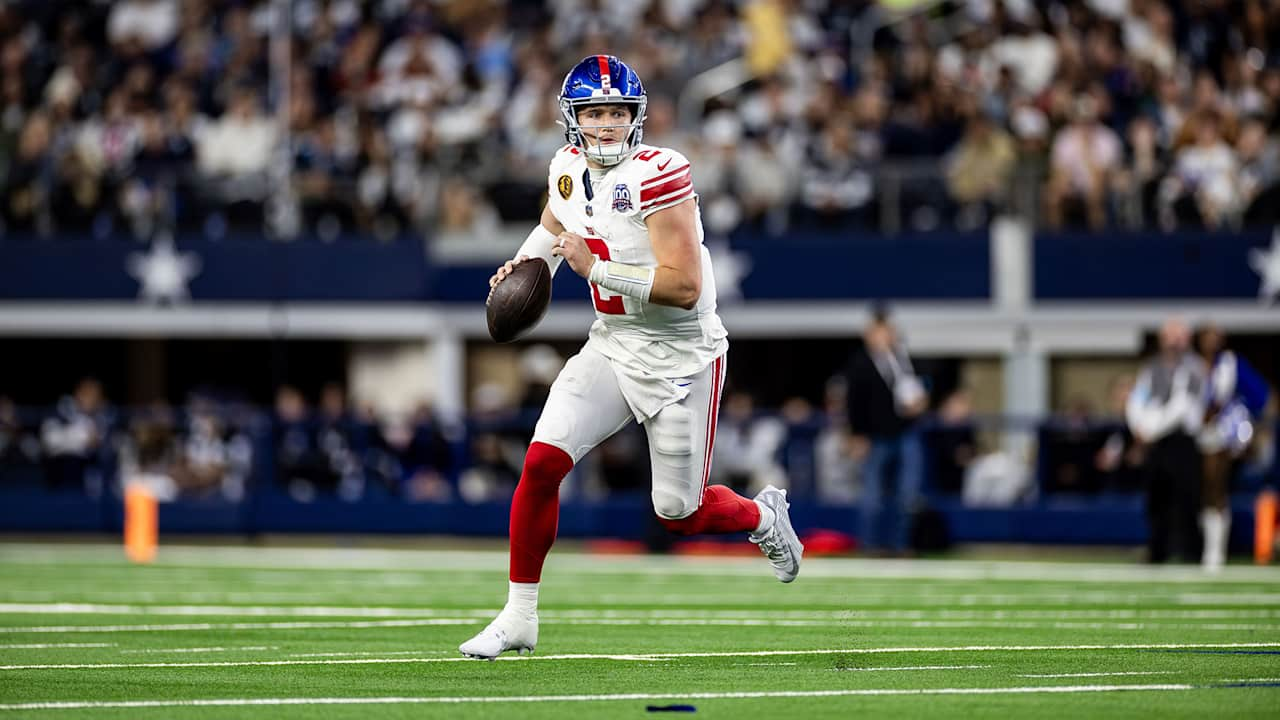Basketball
Knicks, Jalen Brunson find a new weapon vs. Pacers, but will they continue to use it?

Only a few months ago, Miles McBride and Jalen Brunson were opposite sides of a magnet. Yet, head coach Tom Thibodeau had no choice but to use them together.
Mired in a tight February game against the team that later became their second-round playoff opponent, the New York Knicks, as they so often seem to be, were short-handed. Thibodeau had gathered all of his stickiest substances, and with the fury of Edwin Diaz, was ready to sling them at walls.
The most glaring change during that Feb. 1 win over the Indiana Pacers, one of the most memorable games of the Knicks’ winter after Brunson made his first-ever All-Star team and then led a comeback victory hours later, was that Brunson and McBride teamed up.
Heading into that game, the two had played together for only 12 minutes all season, none of them consequential. A couple of just-above 6-footers would have composed too feeble of a backcourt to draw their coach’s attention, but a depleted roster decided for him.
Thibodeau had to try McBride and Brunson at the guard spots. Even in triumph, it was not always pretty.
What was once a double-digit Pacers lead devolved into a 91-91 game with under six minutes to go, thanks to a second-half heater from Brunson. But that’s when the McBride-Brunson dynamic went awry.
Brunson called for a screen from McBride on the right wing. McBride jogged over from the other side of the court as if he would set the pick on Brunson’s left. Instead, he strategically changed direction at the last moment. He ended up impeding only one man: his teammate, who ran into him as the two propelled each other in opposite directions.
The Knicks still scored on that play but only because Brunson twisted his way into a floater that would have been improbable if it rolled off the fingertips of anyone else. Brunson went for 40 points that evening, carrying New York to victory, but the Knicks were still building chemistry.
Not only had McBride and Brunson seldom worked together in NBA games. They didn’t have much experience in practice, either.
When the Knicks scrimmage, Brunson runs with the starters. McBride joins the reserves. They hadn’t drilled those pick-and-rolls the team tried on that late fourth-quarter play, though they pulled off various ones earlier in the same game. Still, a rapport was missing.
“It shows, right?” McBride said that night with a smile.
But McBride also was confident that it wouldn’t show for long.
With the Knicks short a handful of rotation players, McBride would have a chance to establish himself as one of the regulars. In this case, that meant playing more alongside Brunson. He viewed it as a chance to develop a cohesion that was still in its infantile stages.
These were “two high-IQ players,” McBride said, guys who practice intensely, prepare in a way that makes Thibodeau proud and understand team concepts. The more the Knicks used two-point-guard lineups, the better they would look.
Never has a prediction appeared so prescient.
Now, the Knicks are playing that same Indiana team they did on Feb. 1 but under more intense circumstances, battling in the second round of the playoffs. They lead the series 3-2, one win away from their first trip to the Eastern Conference finals in 24 years, heading into Friday night’s Game 6 in Indianapolis. And they took command because of this newfound harmony.
McBride entered the starting lineup in Game 5 against the Pacers, a 121-91 Knicks win. A first unit that included him, Brunson, Donte DiVincenzo, Josh Hart and Isaiah Hartenstein demolished opponents in March and April when the Knicks were once again injured. Those five were plus-104 in 172 minutes in the regular season.
During a second-round series that included an injury to OG Anunoby and cramped spacing because of his initial replacement, Precious Achiuwa, Thibodeau returned to what gelled at the beginning of spring. It meant McBride rejoining Brunson.
It’s safe to say now: Those klutzy moments are behind them.
New York’s Game 5 plan was obvious. McBride would be essential. Not only did he give Brunson more space to operate than did Achiuwa, who the Pacers would not defend beyond the 3-point arc, but he also opened up new possibilities.
Those pick-and-rolls that were once as rare as a Jericho Sims tirade became the core of the Knicks offense. From the first minute of the game, McBride, who finished with 17 points, was setting screens for Brunson — and it was more about who was guarding McBride, too. The Pacers stuck All-Star point guard Tyrese Haliburton, their most vulnerable defender, on the 23-year-old.
The Knicks knew what to do from there.
“Tyrese is really good on the offensive end. Make him guard,” DiVincenzo said. “Make him guard and you live with it. If they wanna switch it, he’s one-on-one with Jalen all night. If you wanna send help, you wanna do that, we’re gonna be us and make the right play.”
So the Knicks continued to place Haliburton, who is the Pacers’ weak point when healthy and on top of that is fighting through a litany of injuries, including back spasms, a sacral contusion and a sprained ankle, in action after action.
When he manned McBride, McBride set screens for Brunson. When he was on Alec Burks, who jolted to 18 points off the bench, it was Burks coming Brunson’s way.
The strategy is simple: Make the opponent’s shakiest defender guard the screener on constant pick-and-rolls. The Knicks had never pressed this button so repeatedly.
Over the first four games of the Pacers series, Brunson ran 23 pick-and-rolls with Haliburton guarding the screener, according to data compiled by Second Spectrum. In Game 5 alone, he ran 22.
In the process, McBride and Brunson went mainstream.
In this play less than two minutes into Game 5, McBride scurries to Brunson to set a similar type of pick to the one they botched in February. He changes angles at the last second, impeding Brunson’s defender, Aaron Nesmith, enough that Haliburton has to stick with the dribbler. The scramble leaves McBride open for a 3-pointer on the wing.
Haliburton’s job for most of Game 5 was to show and recover on these plays, meaning he was supposed to hustle slightly above the level of the screen to deter Brunson from heading in his direction and then hustle back to his initial assignment, in this case, McBride or Burks. It’s a common strategy teams will implement against screeners who prefer to pop to the 3-point arc rather than dive to the rim. But Haliburton often was not quick enough returning to his man.
The result was a Brunson boiler. He went for 44 points in the game, 28 in the first half, and the Knicks crushed the Pacers.
“I thought it was better in the second half, but it’s something that worked for them,” Haliburton said. “They’re going to continue to go to it in Game 6. … I’ll watch the film, see where I can get better and improve on that going into next game.”
The Pacers could arrive Friday with schematic changes.
They could put Haliburton on Hart instead of McBride, which could encourage the Knicks to use their undersized power forward instead of a shooter with range as Brunson’s screener. Unlike McBride, Hart won’t pop to the 3-point arc in the pick-and-roll. Instead, he’ll attack downhill, which means if the Pacers rejiggered the matchups this way, they could play a more conservative coverage than the main ones they leaned on Tuesday. But Haliburton manning Hart also could be a recipe for disaster on the offensive glass, which the Knicks already dominated in Game 5.
The Pacers could go with a move they are yet to try, placing Pascal Siakam, their longest wing defender, on Brunson and praying his ranginess bothers the point guard. Nesmith has taken on Brunson the most of late, but T.J. McConnell and Andrew Nembhard have shuffled onto him, too. The risk here is that Siakam is not as comfortable getting screened. The Pacers have mostly used him on the Knicks’ non-shooters, too, which has allowed him to block off the paint. The burden on Myles Turner to protect the rim would become even heavier if they sent Siakam so far from the hoop.
They could trap Brunson aggressively, sending both defenders in the pick-and-roll at the point guard. The Pacers trapped sporadically during Game 5, sometimes traveling out to the half-court line to do it, but many of their double-teams on Brunson were too soft. A defender would linger in Brunson’s direction but not apply enough ball pressure to bother him, which handed Indiana the worst of both worlds: A low chance of forcing a turnover while also serving the Knicks a mini four-on-three behind them.
They could send double-teams from whichever non-shooter the Knicks have in the game at the moment, whether that’s Hart or Achiuwa.
They could stay true to their identity, too. The Pacers want to funnel dribblers to the middle and prevent 3s. All season, they have avoided helping too overzealously from the perimeter. They have shown no interest in switching Haliburton to Brunson, which could cause a significant mismatch. But maybe their best chance is for them to trust their top player, switching these pick-and-rolls so Brunson’s defender, usually Nesmith, sticks to Haliburton’s man and Haliburton squares up another All-Star point guard.
The Pacers put themselves at risk of Brunson, who has already simmered to five 40-point games in the playoffs, roasting a helpless, maybe still injured guard, but at least they could keep their defensive principles. And Brunson firing 2-pointers each possession against Haliburton could be better than any alternative.
Whatever he chooses, Indiana coach Rick Carlisle will edit something, and the Knicks will have to counter.
“Sometimes something works, you stay with it and then you do it the next game and it doesn’t work so you gotta go somewhere else,” Thibodeau said. “There’s a number of things that they’re doing defensively, and we just gotta make sure we read the game.”
If the Pacers want to force a Game 7, they need to slow Brunson.
A similar theme unlocked the Knicks during last season’s playoffs. After a Game 2 drubbing at the hands of the Cleveland Cavaliers, which evened up their first-round series at 1-1, New York dug into guard-guard pick-and-rolls: Brunson running the show with another small, often Immanuel Quickley or Quentin Grimes, setting the screens. Once the Knicks realized it was their best method of half-court offense, they did not stop.
They won that series in five games. On Friday, they have a chance to close Indiana out in six. And for the Pacers to survive, they have to make New York’s new favorite play more difficult.
“They’ll hit (Brunson) and then it’s on us to make the right plays and the right reads from there,” Thibodeau said. “And that’s where I thought Alec was invaluable. I thought Deuce was invaluable. The second pass, the playmaking that comes off of that, getting the ball to the middle of the floor and then playing off that, everyone working together, that’s what makes you a team.”
(Photo of Miles McBride and Jalen Brunson: J. Conrad Williams Jr. / Newsday via Getty Images)










